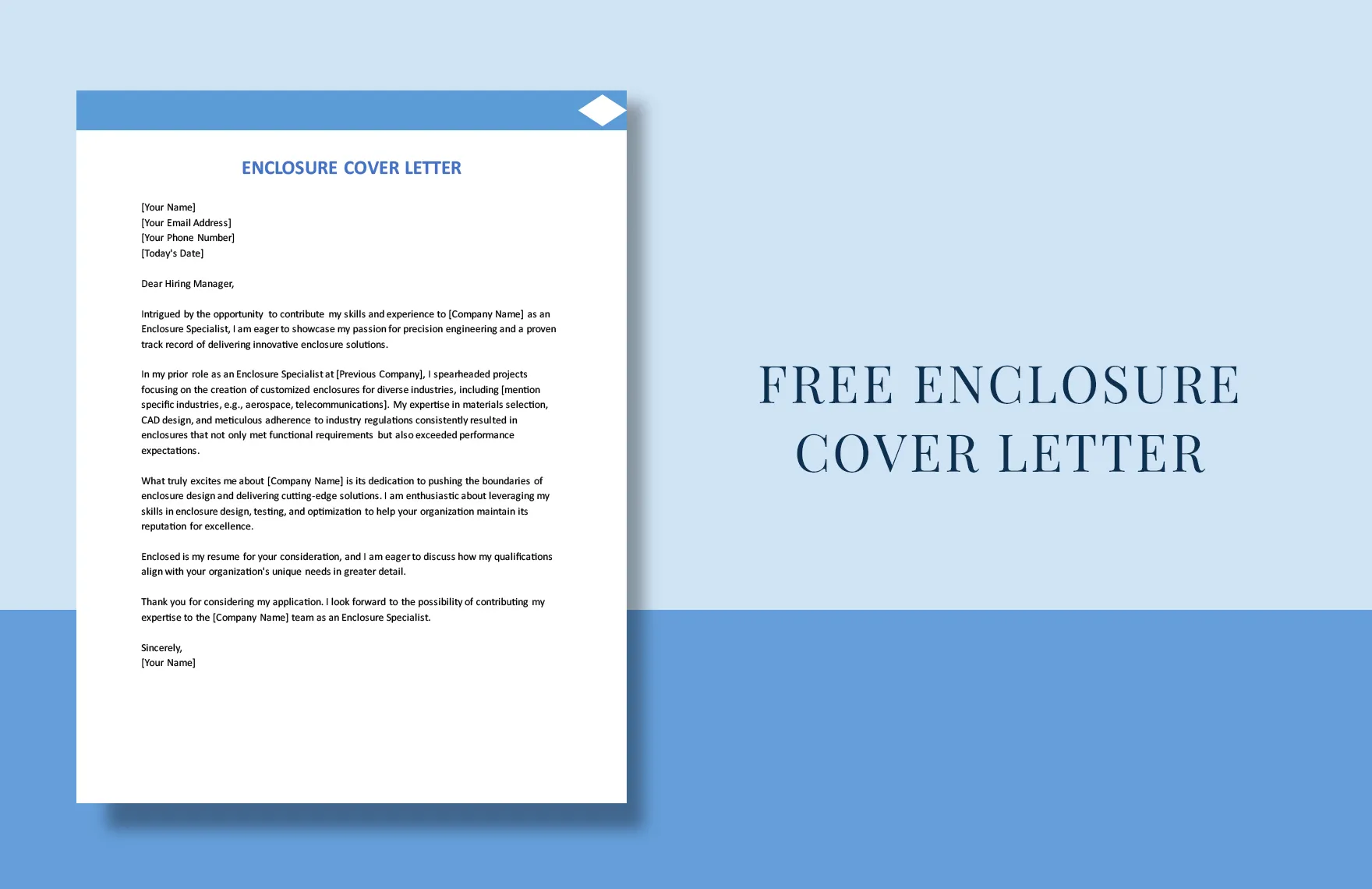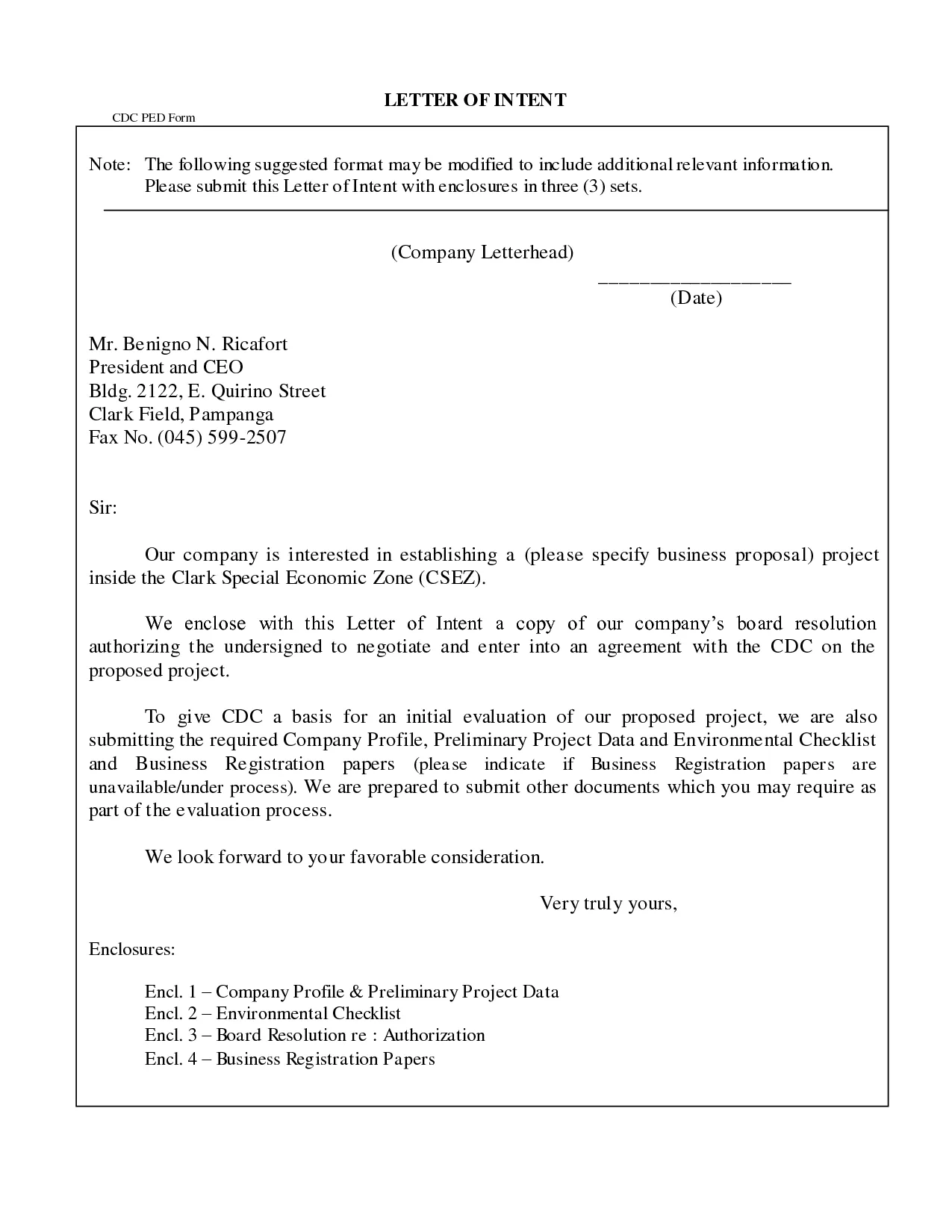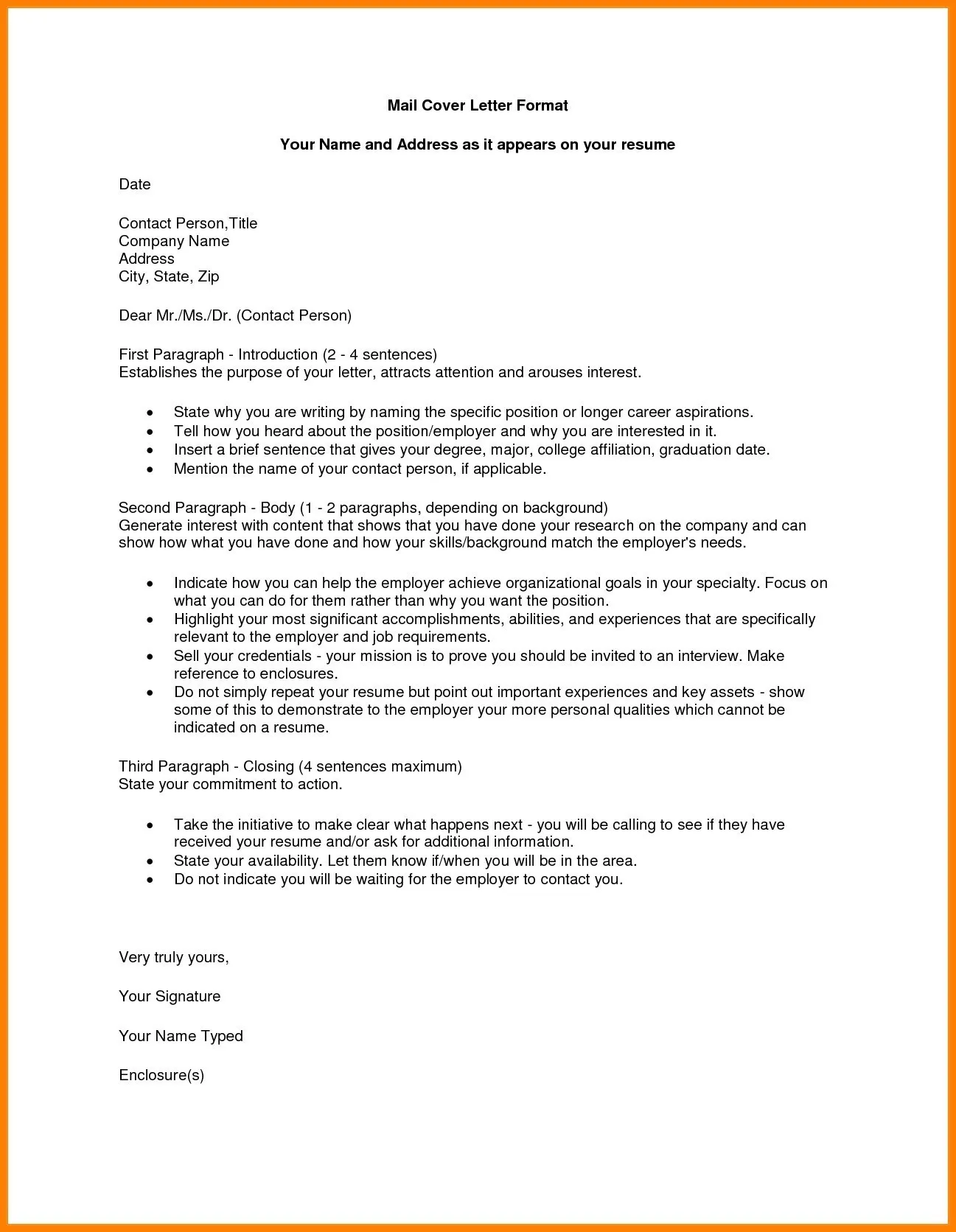What are Cover Letter Enclosures
When you apply for a job, you often send a cover letter along with other documents that support your application. These additional documents are referred to as “enclosures.” They provide further information about your qualifications, skills, and experience, giving the hiring manager a more complete picture of your suitability for the role. Enclosures are an essential part of the job application process because they offer an opportunity to present evidence of your abilities and achievements. This evidence can significantly enhance your chances of getting noticed by the hiring manager and securing an interview. Properly utilized enclosures make your application stand out from the rest, showcasing your professionalism and attention to detail. Therefore, understanding what enclosures are and how to use them effectively is critical for any job seeker.
Types of Cover Letter Enclosures
Various types of documents can be included as enclosures, each serving a specific purpose in highlighting your capabilities. The most common enclosures are the resume, portfolio samples, and references. Each of these documents offers unique value in showcasing your skills and experience, thereby increasing the impact of your cover letter. Additionally, depending on the job requirements, you might include other materials like certifications, awards, or specific project reports. The key is to choose enclosures that are relevant to the job and add value to your application. By thoughtfully selecting and including the right enclosures, you can create a compelling case for why you are the ideal candidate for the position.
Resume

The resume is the most fundamental enclosure, providing a detailed summary of your work history, education, skills, and achievements. It should be tailored to the specific job you’re applying for, highlighting the most relevant experiences and qualifications. The resume serves as a quick reference for the hiring manager, allowing them to assess your suitability at a glance. Ensure your resume is up-to-date, well-formatted, and free of errors. Use clear and concise language to describe your accomplishments and responsibilities. Include quantifiable results whenever possible to demonstrate your impact in previous roles. Regularly review and update your resume to reflect your latest skills and experiences, making it a dynamic document that evolves with your career.
Portfolio Samples
For roles in creative or technical fields, portfolio samples are essential. They provide concrete evidence of your skills and abilities, showcasing your past projects and accomplishments. Include examples of your best work that are relevant to the job requirements. This might include design projects, writing samples, code repositories, or other tangible outputs. Ensure your portfolio is well-organized and easy to navigate. Provide clear descriptions of each project, including your role, the objectives, and the results achieved. Consider creating an online portfolio or using platforms like Behance or GitHub to host your work. This allows hiring managers to easily access and review your portfolio, giving them a more in-depth understanding of your capabilities.
References
Providing references demonstrates your professional network and allows potential employers to verify your credentials. Include a separate document with the names, titles, contact information, and your relationship with each reference. Always seek permission from your references before including them in your application. Choose references who can speak positively about your skills, work ethic, and achievements. Providing references is a sign of confidence and offers credibility to your application. Be prepared to provide additional references upon request. Maintain a professional relationship with your references, keeping them informed about your job search and the types of roles you’re applying for. This ensures that your references can provide accurate and relevant insights when contacted by potential employers.
Why Include Enclosures

Including enclosures in your cover letter can significantly increase your chances of success in the job application process. They serve as valuable supplements to your cover letter, providing a comprehensive view of your qualifications and skills. Enclosures help you to showcase your abilities, demonstrate your professionalism, and provide a strong foundation for a positive impression on the hiring manager. Additionally, including enclosures allows you to provide concrete evidence of your capabilities. This evidence can strengthen your case, making you a more attractive candidate compared to those who only provide a cover letter and resume. Properly used, enclosures provide a competitive edge in the job market, thereby enhancing your application and increasing your chances of being noticed.
Enhance Your Application
Enclosures allow you to provide additional context and detail to your cover letter, thereby making your application more complete. Including a resume and portfolio samples can give a more thorough understanding of your experience and achievements. By providing specific examples of your work, you demonstrate the value you bring to the table. Enclosures act as a bridge between your cover letter’s claims and your actual capabilities. They offer additional evidence to validate your skills, making your application more credible and compelling. This detailed approach can set you apart from other candidates who may not provide such comprehensive support. By strategically incorporating enclosures, you enhance the overall quality of your application, increasing your chances of securing an interview and landing the job.
Demonstrate Professionalism
Including enclosures shows that you’re organized and detail-oriented, which are crucial attributes in any workplace. It demonstrates that you are willing to go the extra mile to provide all the necessary information for the hiring manager. By taking the initiative to include enclosures, you present yourself as a proactive and thorough candidate, showcasing your commitment to the job. This attention to detail can positively influence the hiring manager, reflecting positively on your work ethic and potential. Moreover, providing well-organized enclosures shows you value the hiring manager’s time by providing all the necessary documents upfront. This can lead to a positive first impression, establishing a foundation for a successful job application.
How to Properly Include Enclosures

Properly including enclosures involves specific formatting and presentation guidelines that ensure your application is professional and easy to review. These guidelines include how you mention enclosures in your cover letter and the proper formatting and presentation of the documents themselves. Proper adherence to these standards will demonstrate attention to detail and enhance your overall presentation. Your goal is to make it easy for the hiring manager to understand what enclosures you are sending and why they are relevant to the job. By following these best practices, you create a positive impression and increase the effectiveness of your application.
Mentioning Enclosures in Your Cover Letter
You should explicitly mention your enclosures in your cover letter to draw attention to them and guide the hiring manager. State which documents you are including and briefly explain their purpose. This can be done in the closing paragraph of your letter, such as: “Enclosed, please find my resume and portfolio samples for your review.” This practice highlights the attached documents, encouraging the reader to review them in detail. Always be clear and concise in your references to your enclosures. Avoid vague or ambiguous language, ensuring the hiring manager immediately understands what to expect. By mentioning your enclosures, you ensure they are not overlooked. This can increase the likelihood of your application being considered more thoroughly.
Formatting and Presentation
Ensure that all enclosures are well-formatted, professional, and easy to read. Use a consistent font, clear headings, and ample white space. All documents should be neatly organized and free of errors. Use a professional font like Arial or Times New Roman in a readable size. Proofread all documents carefully, checking for spelling and grammatical errors. Save your documents in a common file format, such as PDF, to maintain their formatting. Attach your documents in a logical order, typically with the cover letter first, followed by the resume and other enclosures. By paying attention to the details of formatting and presentation, you show respect for the hiring manager’s time and increase the readability of your application.
Best Practices for Cover Letter Enclosures

Following best practices when including enclosures in your cover letter is crucial for maximizing their impact. This includes ensuring relevance to the job requirements and taking great care in proofreading your documents. Properly formatted, relevant, and error-free enclosures will help create a positive impression and enhance your chances of being selected for an interview. By paying attention to these aspects, you ensure that your application is professional, effective, and persuasive.
Be Relevant and Targeted
Only include enclosures that are relevant to the specific job you’re applying for. Tailor your resume, portfolio, and other materials to highlight the skills and experiences that align with the job description. Do not include irrelevant information that may distract the hiring manager. Carefully review the job requirements and tailor your enclosures to address them directly. Highlighting the most relevant qualifications and achievements demonstrates that you understand the role and its requirements. This targeted approach shows that you have carefully considered the job and are a serious candidate. Relevance increases the impact of your application, showcasing that you have the right skills and experience for the position.
Proofread Carefully
Proofread all documents carefully to ensure they are free of errors. Typos, grammatical mistakes, and formatting inconsistencies can detract from your professionalism and make a negative impression. Use spell-check and grammar-check tools, but also read through your documents manually. Have someone else review your application materials for a fresh perspective and catch any errors you may have missed. Thorough proofreading demonstrates your attention to detail and commitment to quality. Make sure that your enclosures are polished, professional, and free from errors. Taking this extra step ensures your application presents you as a capable and qualified candidate.
In conclusion, cover letter enclosures are a critical component of a successful job application. They offer a valuable opportunity to showcase your qualifications, provide concrete evidence of your skills, and enhance your application’s overall appeal. By understanding what enclosures are, the types available, and how to properly include them, you can significantly increase your chances of making a positive impression on potential employers. Remember to tailor your enclosures to the specific job, format them professionally, and proofread them meticulously. Utilizing enclosures effectively will help you stand out from the competition and take you one step closer to landing your dream job.
